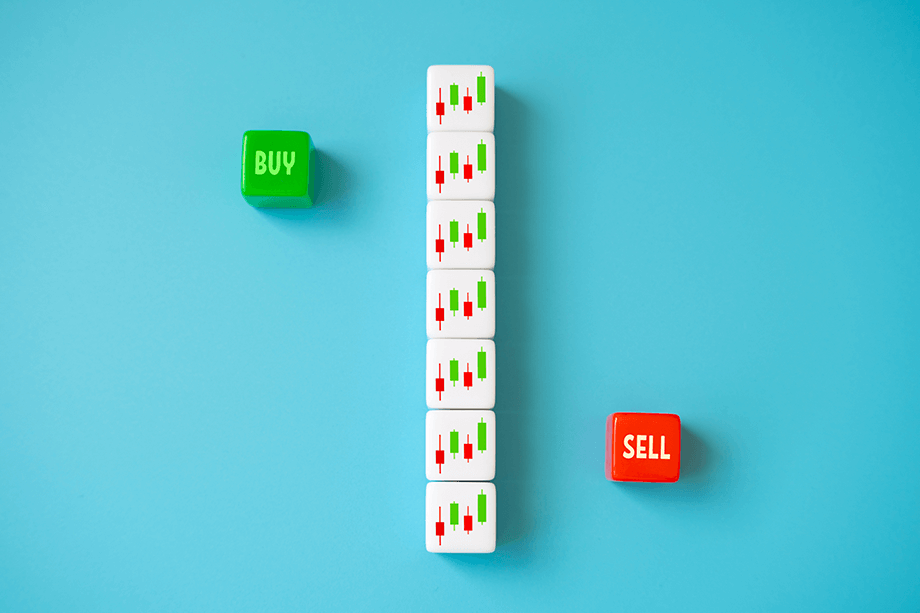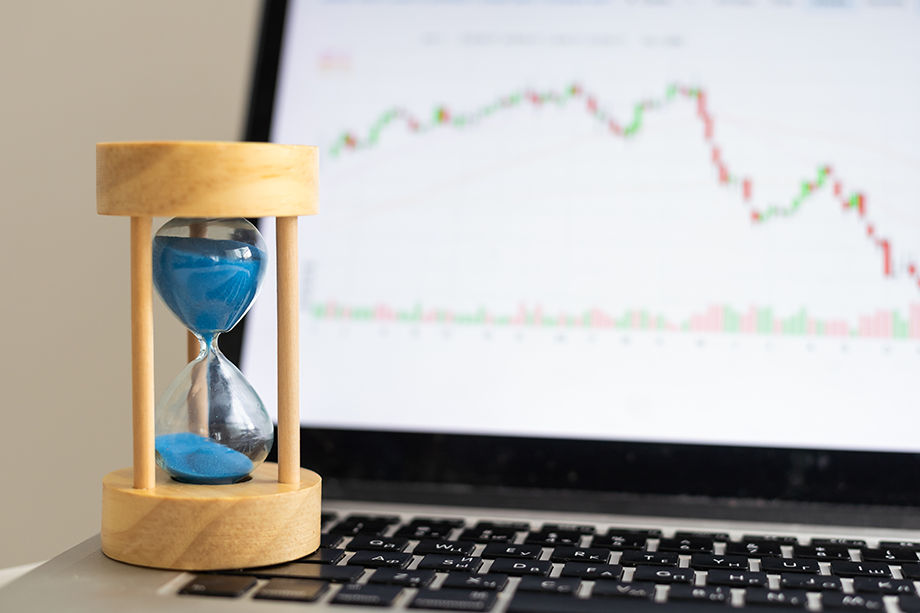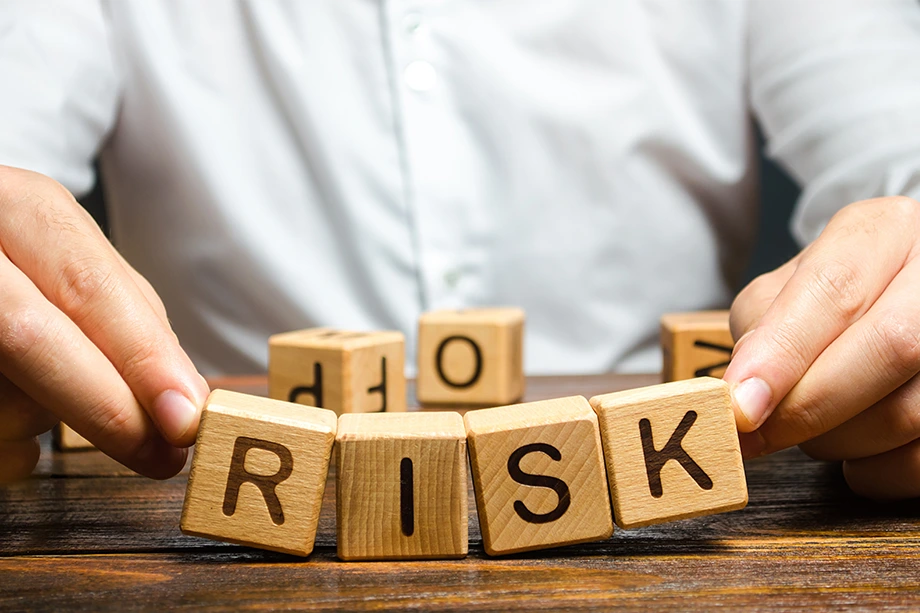Warren Buffett says, “Risk is not knowing what you are doing.” Again, the key word is you, not the investment.
We’ve experienced the longest bull market in history with unprecedented gains. It can be easy to see that the market is overvalued and prices are too expensive. At any given moment, it can even look like with a few days of drops that it might come down and crash. But do you know?
If you’re asking “is now the right time to buy stocks?” here’s a newsflash: it’s a silly question because an investor can ask that same question at every point in time.
When you look at a chart in hindsight, it’s easy to see the right moments to buy and sell. But when you are in the middle of it, how can you know?
That’s why “being safe” is futile, and may actually be holding you back.
What appears safe may very well be risky…very risky
Safe or risky? Those words need to be redefined when it comes to investing. Here are three places you can “invest” your money that typical financial advisers have advocated as safe.
- Savings
- Mutual funds
- 401(k)s
Are these safe or risky? The typical financial planner will tell you they are safe. Successful investors say they are risky. Why?
Savings
With the dollar and other global currencies decreasing in value, your currency is worth less and will buy you less in the future. On top of that, the interest you are paid by the bank for your savings may earn you less than the fees and expenses you have to pay to keep your money in the bank. By saving money, in many cases, you are losing money. Would you call that a safe investment or a risky investment? An investment that consistently loses money is a liability.
Mutual funds and 401(k) plans
A mutual fund is simply a collection of stocks, bonds, and other similar securities. It could also be a company that pools the money collected from many investors and then invests those funds in stocks, bonds, and other similar paper assets.
A 401(k) is a retirement plan, often considered a retirement savings plan, set up by employers that allows employees to contribute a portion of their salary into this plan. A 401(k) plan invests the employee’s contribution into mutual funds. Similar plans exist in other countries under other names such as a superannuation plan in Australia and New Zealand, an RRSP in Canada, a 401(k) in Japan, and a pension scheme in the United Kingdom.
Here is the reality of mutual funds according to John C. Bogle, the founder and CEO of Vanguard Group:
Well, it’s awesome. Let me give you a little longer-term example I use in my book of an individual who is 20 years old today starting to accumulate for retirement. That person has about 45 years to go before retirement—20 to 65—and then, if you believe the actuarial tables, another 20 years to go before death mercifully brings his or her life to a close. So that’s 65 years of investing. If you invest $1,000 at the beginning of that time and earn 8 percent, that $1,000 will grow in that 65-year period to around $140,000.
Now, the financial system—the mutual fund system, in this case—will take about 2.5 percentage points [in fees] out of that return, so you will have a gross return of 8 percent, a net return of 5.5 percent, and [in that 65-year period] your $1,000 will [instead] grow to approximately $30,000. $110,000 goes to the financial system, and $30,000 to you, the investor. Think about that. That means the financial system put up zero percent of the capital, took zero percent of the risk, and got almost 80 percent of the return. And you, the investor in this long time period, an investment lifetime, put up 100 percent of the capital, took 100 percent of the risk, and got only about 20 percent of the return. That is a financial system that is failing investors because of those costs [fees] of financial advice and brokerage, some hidden, some out in plain sight, that investors face today. So the system has to be fixed.
The mutual fund companies, the managers, and the salespeople—they all make money whether you do or not. Most are not concerned with the actual performance of the fund. They are mainly concerned about their fees.
Now ask yourself, is that safe or risky?
Titanic: a case study for investing
The Titanic was not the first ship to ever sink. Other ships have crashed and sunk before. With the case of the Titanic, though, the problem could have been easily fixed. There simply weren’t enough lifeboats for all the passengers and crew.
The ship sank slowly, so there was plenty of time to save everyone. But there were not enough lifeboats.
So the issue isn’t whether the boat is going to sink or not, the question is all about planning your exit. In other words, do you have a lifeboat in place in case the market goes against you. No one can tell you for certain whether the market is going up or down tomorrow. But you can plan on getting your lifeboat ready.
Take it from investing expert and Rich Dad Advisor, Andy Tanner:
“My answer is always this: I don’t care if the market crashes because I always have an exit. I have the freedom to enjoy this market if it goes higher and higher. But I don’t care if it goes down because I have planned for that possibility and put precautions in place.”
Again, the key is to increase your financial education. Part of a good financial education is to also gain new tools you can use to improve your cash flow and wealth.
Planning your exit
If you have a 401k or other retirement account, do you have an exit strategy? Do you have a way to insure your account if the overall market goes against you? If the answer is no, then take a lesson from the Titanic and get one fast.
So let’s go back to that original question: “Is now the right time to buy stocks?” Too many people think the only way to invest in stocks is to buy a stock and hold onto it forever. For people like that the answer is yes, it is a bad time to buy stock.
However, if your goal is to get smart and make safe and steady income from the market, then the best time to invest in the stock market is all the time. Because when you have the right training, skills, and tools, you will have everything you need to create cash flow and control your risk.
Risky versus safe
Again, it really doesn’t matter when you decide to hop into the stock market. There’s never a bad time to get in and take advantage of cash flow opportunities. The only difference is knowing in advance how to protect yourself with a lifeboat.
The truth is, there are no investments that are 100 percent guaranteed. There is no investment that is absolutely safe (safe meaning “free from losses”) . There is no risk-free investment. When you invest your money, you will win and you will lose. That is a guarantee. Yet there certainly are things you can do to reduce the risk and increase the safety.
In summary, what is risky and what is safer?
Risky
- Having no financial education.
- Blindly turning your money over to a financial planner or adviser.
- Not understanding the investment and the returns on the investment.
- Putting up the majority of the money and the risk and letting others walk away with the majority of the returns.
- Having no control in your investments.
- Depending heavily on a financial adviser.
Safe… er
Getting financially educated.
- Actively investing your money and gaining hands-on experience.
- Understanding the investment and the returns on the investment.
- Putting up the majority of the money and the risk and getting the majority of returns.
- Having control in your investments.
- Becoming your own financial adviser.
The market can always hit new highs and have record drops. A cruise ship can arrive at its destination, or it can hit an iceberg and sink. Your job is to be on the ship to arrive at your desired destination, but to always be prepared with your exit strategy.
For more information about how to invest in the stock market using smart, simple, and safe strategies go to Andy Tanner’s Creating Your Rat Race Escape Plan.






